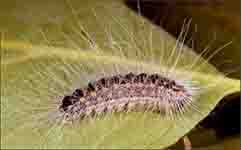Narayana Verlag
- more than 10.000 products about homeopathy and natural healing
- Seminars with worldwide known homeopathic doctors
- Healthy and natural food
- Homeopathy for plants
Top Customer's Feedbacks
from 108604 Feedbacks
Beckie from USA
Your site was recommended at my homeopathy academy. I shall return.
W.L. from USA
you might point out which supplements can't be shipped to the US and Canada with the description.
G.C. from USA
I am very pleased with Narayan Verlag!Narayana Verlag
 2.738.485 customers from 193 countries
2.738.485 customers from 193 countries
- more than 10.000 products about homeopathy and natural healing
- Seminars with worldwide known homeopathic doctors
- Healthy and natural food
- Homeopathy for plants

Beckie from USA
Your site was recommended at my homeopathy academy. I shall return.Experiences with Grubs

Apis mellifica: caterpillars of the cabbage white butterfly on curly kale and pumpkin |
Treatment date: |
June 8, 2010 |
Plant: |
Cherry trees |
Location: |
Garden |
Problem: |
Infestation of winter moth |
Analysis: |
|
Treatment: |
Watered with a solution of 10 ml in 10 L water |
Result: |
June 12: new leaves forming at the tips; no new infestation |
| June 27: new shoots not affected |
 |
 |
| Before | Cherry trees (sour cherry) no further infestation |
 |
 |
| Cherry trees (sweet cherry) no further infestation |
Cherry trees (sweet cherry) no further infestation |
Bombyx 6X: Oak Processionary Treated with Homeopathy
The caterpillar of the
Oak Processionary Moth, which are often found in large numbers on oak trees,
develop long poisonous hairs with bristles containing nettle toxin. These hairs
easily break and can often be carried far on the wind. On contact with the skin,
they cause inflammation and reactions similar to an insect bite.
Ms
Giselle S. sent us the following report on her experience with the homeopathic
preparation Bombyx
proc.6X, made from the caterpillar of the oak processionary
moth.
About 3 weeks ago (early June) I bought the remedy Bombyx proc. 6 X
from you. Following the description, I treated 10 trees with it – 10 ml in 10
litres of water, 2 watering cans per tree in the root area. It's only a drop in
the ocean since there are approximately 100 trees on the piece of land, but I
wanted to first see the effect for myself.
After about a week, the
caterpillars began to avoid the treated trees, no longer climbing onto them. Two
weeks after the first application, this behaviour became more obvious:
caterpillars that were thrown off by the wind and weather no longer climbed back
onto the trees, and other groups marched back down off the tree they were on.
They just no longer seemed to like the taste of the leaves. In the meantime I
watered the trees again with the remedy.
The caterpillars do not seem to be
harmed by the treatment but they simply go elsewhere to find other host plants,
such as a nearby birch. Like the German saying that old things are no longer
tasty but we will not starve for that reason. So do we have to water all the
plants and trees in this area in order to starve them?! I did not see this
migration with trees that were not treated.

![]() » Bombyx processionea (processionary caterpillar) order
» Bombyx processionea (processionary caterpillar) order
 Box Tree Moth Extra (Cydalima perspectalis)
Box Tree Moth Extra (Cydalima perspectalis)
We have had several similar comments about successful treatment of the
box tree moth. However, we have also had some reports in which there was
either no effect or an insufficient effect. Box tree moth infestation
The box trees of family B. from Bürgstadt in Germany were severely infested with box tree moths. First a chemical pesticide was used but without any apparent success. Two weeks later the family sprayed their bushes with Box Tree Moth Extra. After a single application there was a noticeable effect.
The next day the caterpillars became lethargic and fell off.
The box trees were also sprayed with Arnica 200 C, which strengthened the plants, and they then put out new green shoots from below.
Family B., Bürgstadt, written down by Karen Luetke
********************************
Box tree moth extra: Box tree moth successfully treated with homeopathy

Ms B. has a number of attractive boxwoods in her garden.
In the middle of May she discovered the first cocoons and signs of damage caused by the box tree moth. The infestation increased very rapidly.
She then thoroughly sprayed the bushes with box tree moth extra , repeating the treatment at weekly intervals.
The first treatment put a stop to further damage. A caterpillar was seen moving away from one of the bushes.
A week later she could not find any more caterpillars in the bushes.
To help the wounds heal and encourage fresh growth, Ms B. then administered Arnica 200 C.
The bushes have now completely recovered.
Sabine B., Wiesloch, Germany, 2013
![]() » Box Tree Moth Extra (Cydalima perspectalis) order
» Box Tree Moth Extra (Cydalima perspectalis) order
 Thuja occidentalis
Thuja occidentalis
Thuja 30C: Grubs on currants: 3 pellets in 10 liters water, applied once by watering, to combat grubs on currants – after one week, no more eaten-away areas could be seen. (SB)
Thuja 6D: Lyonetiidae moths: These little animals had always left marks on the leaves of my Iberis. The leaves looked like parchment paper and, if badly infested, the plants died. The first time I saw them this year, I watered the plants with Thuja 6D (5 ml /10 liters water) and the spell was broken.









